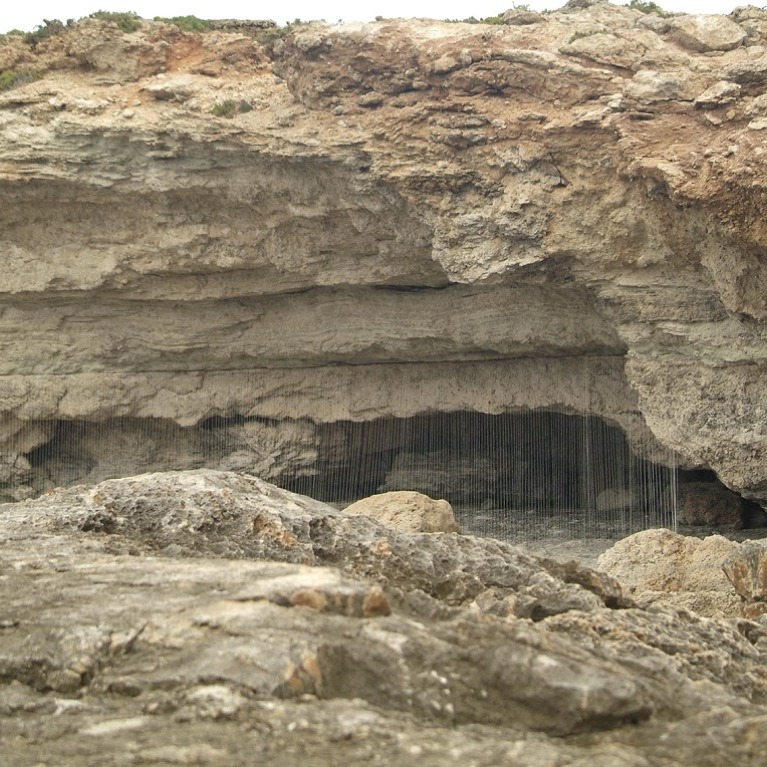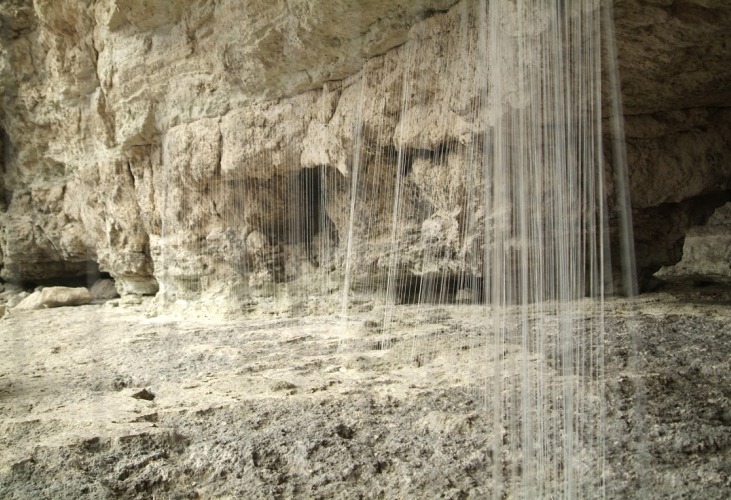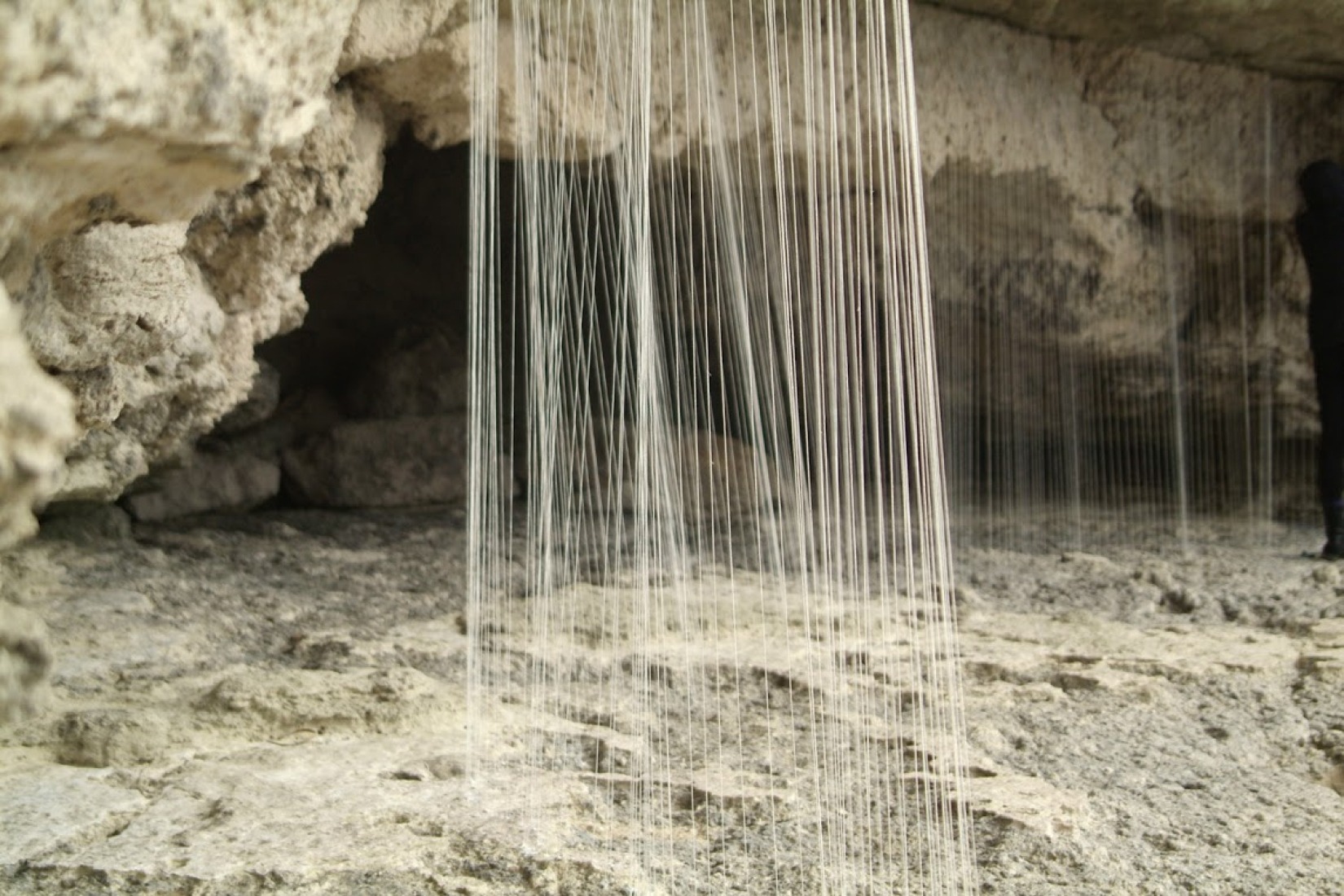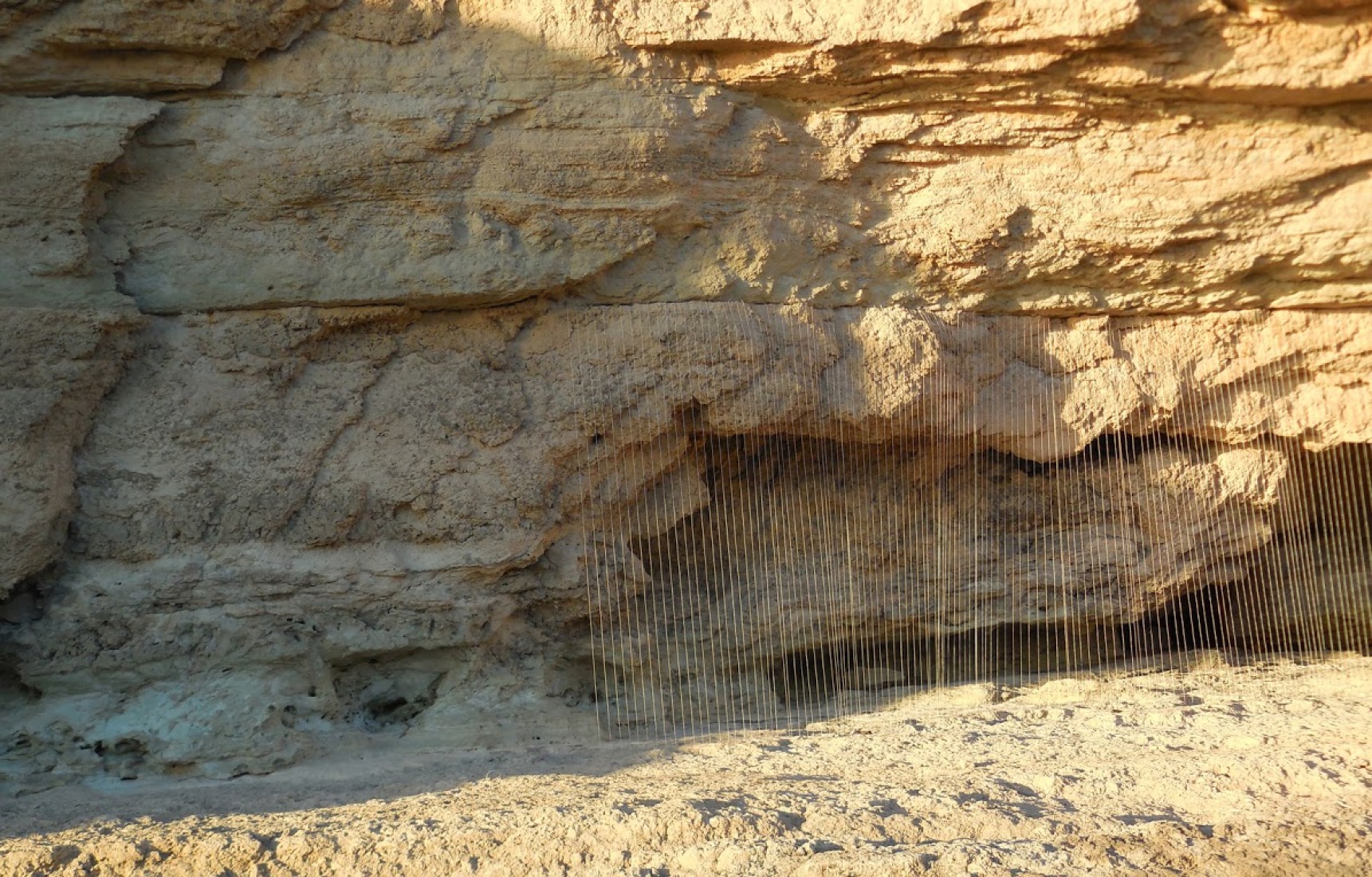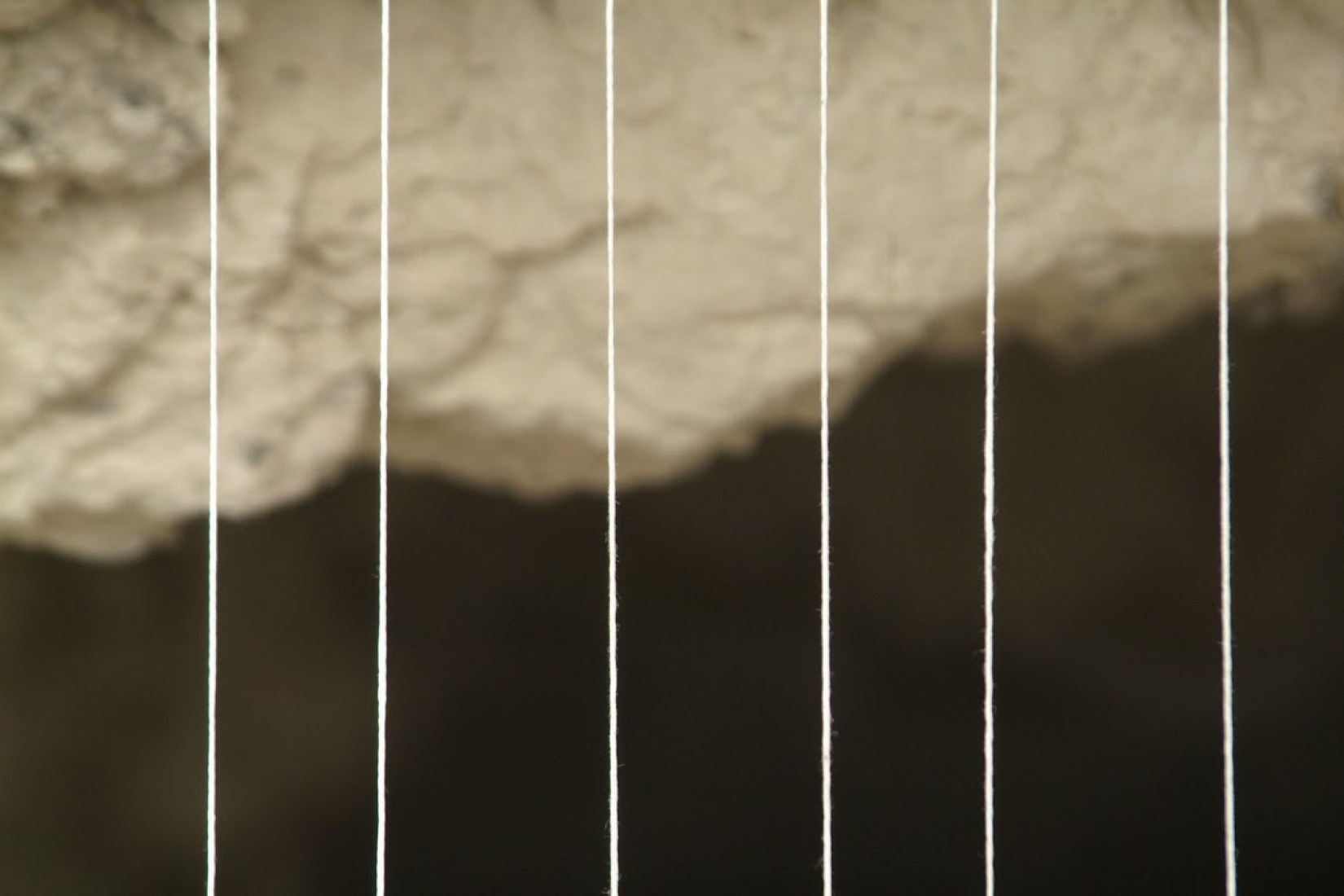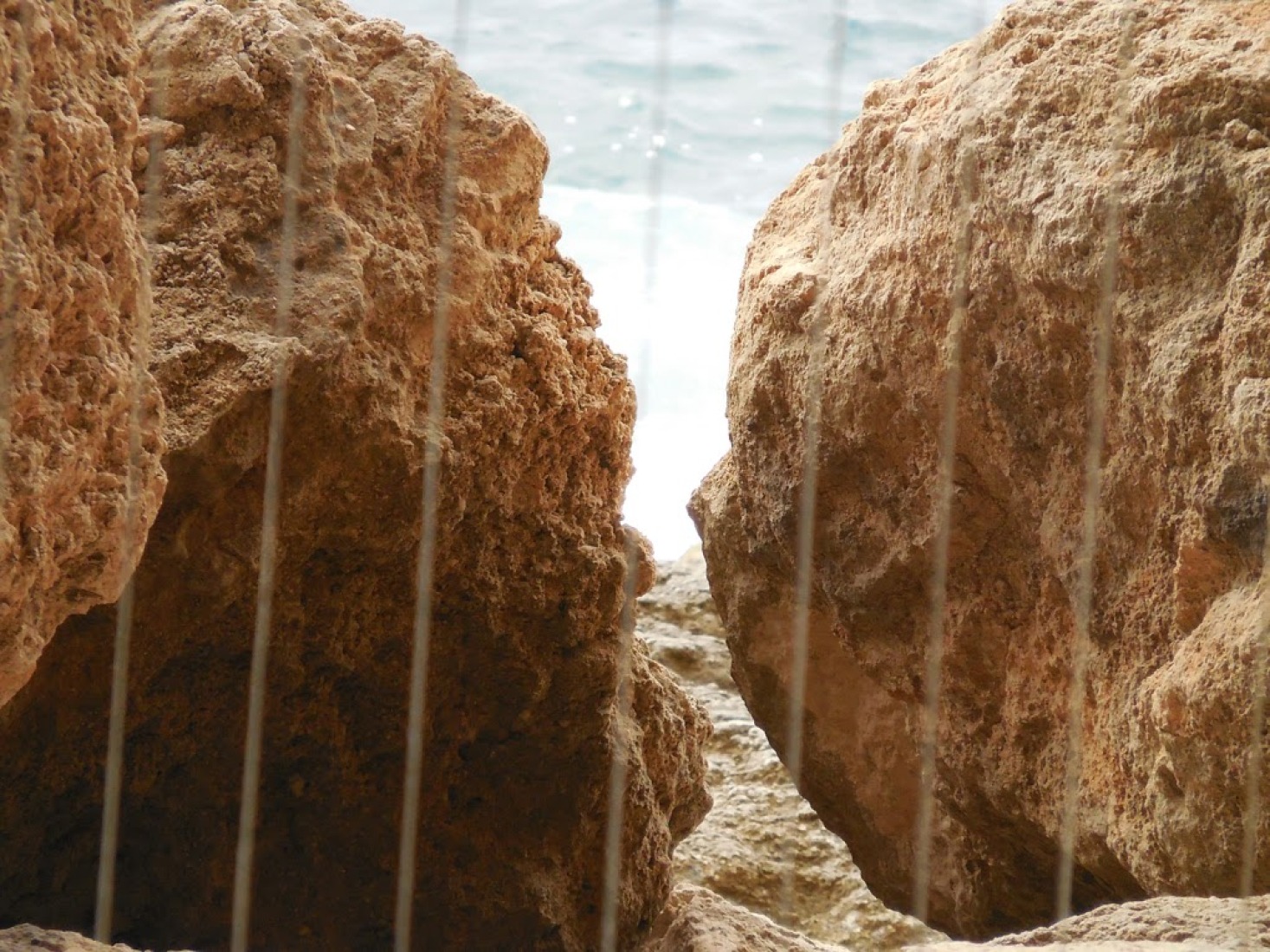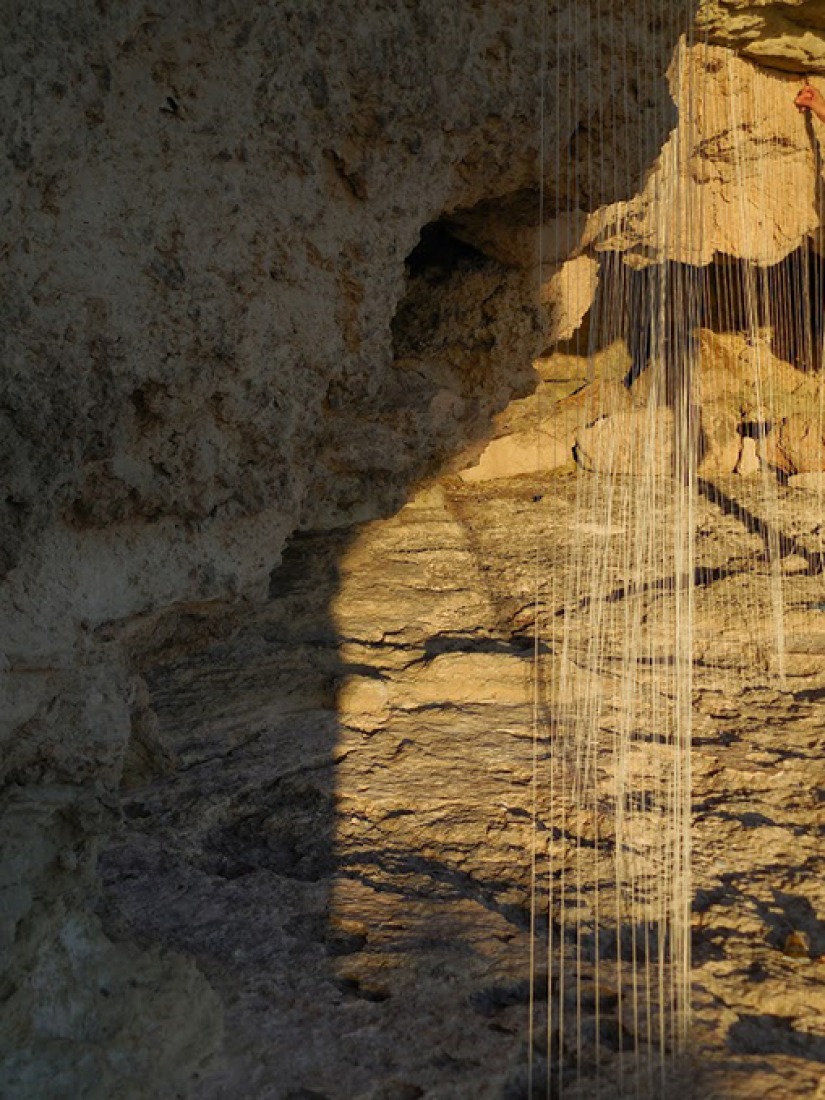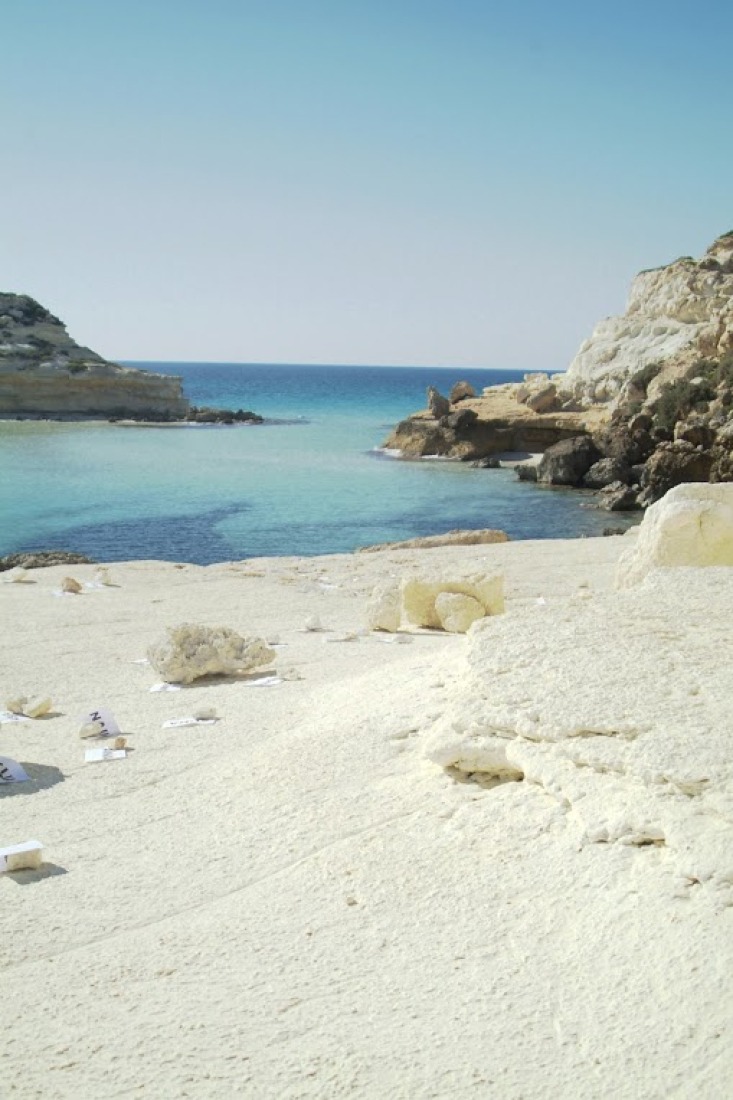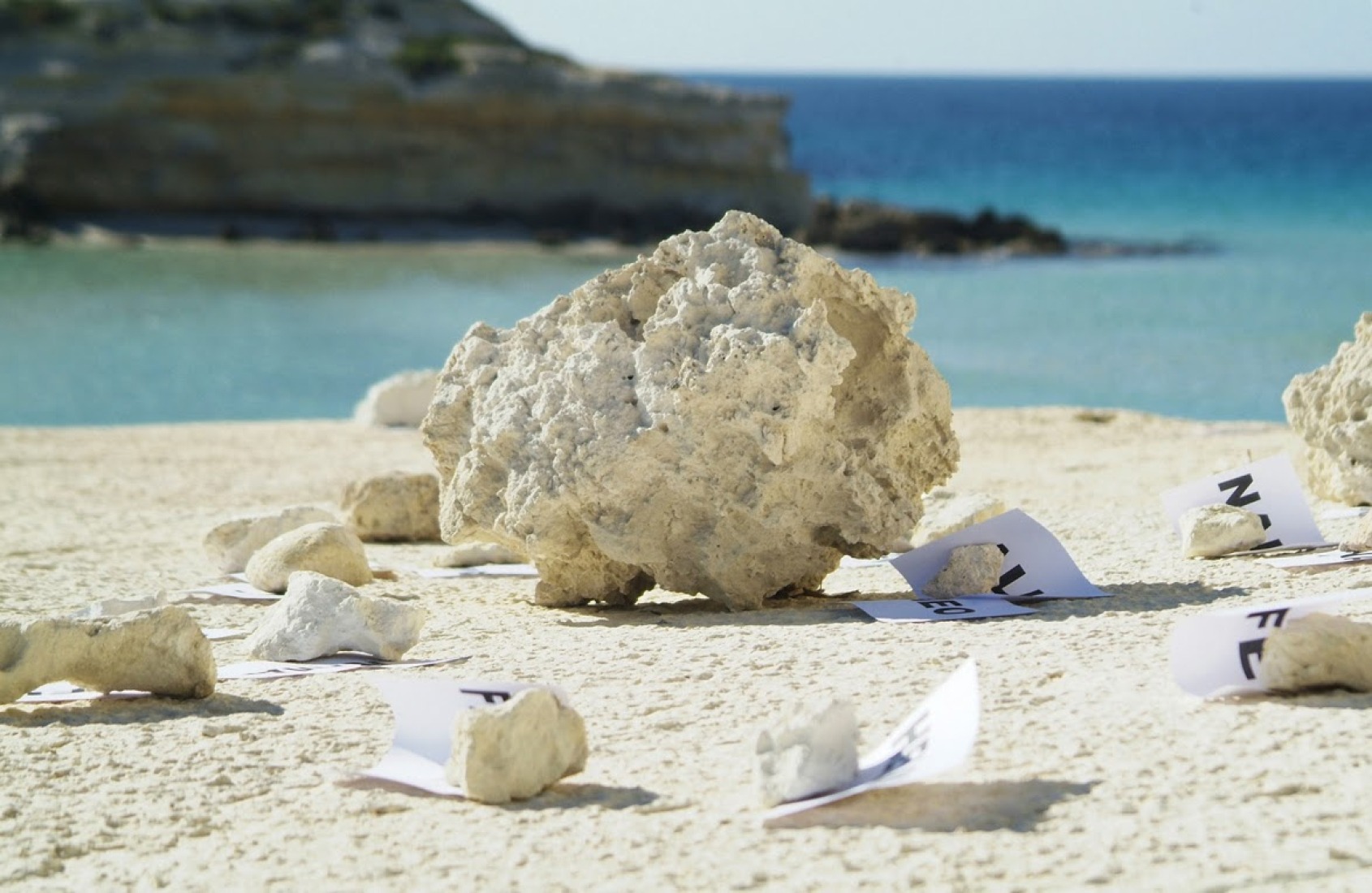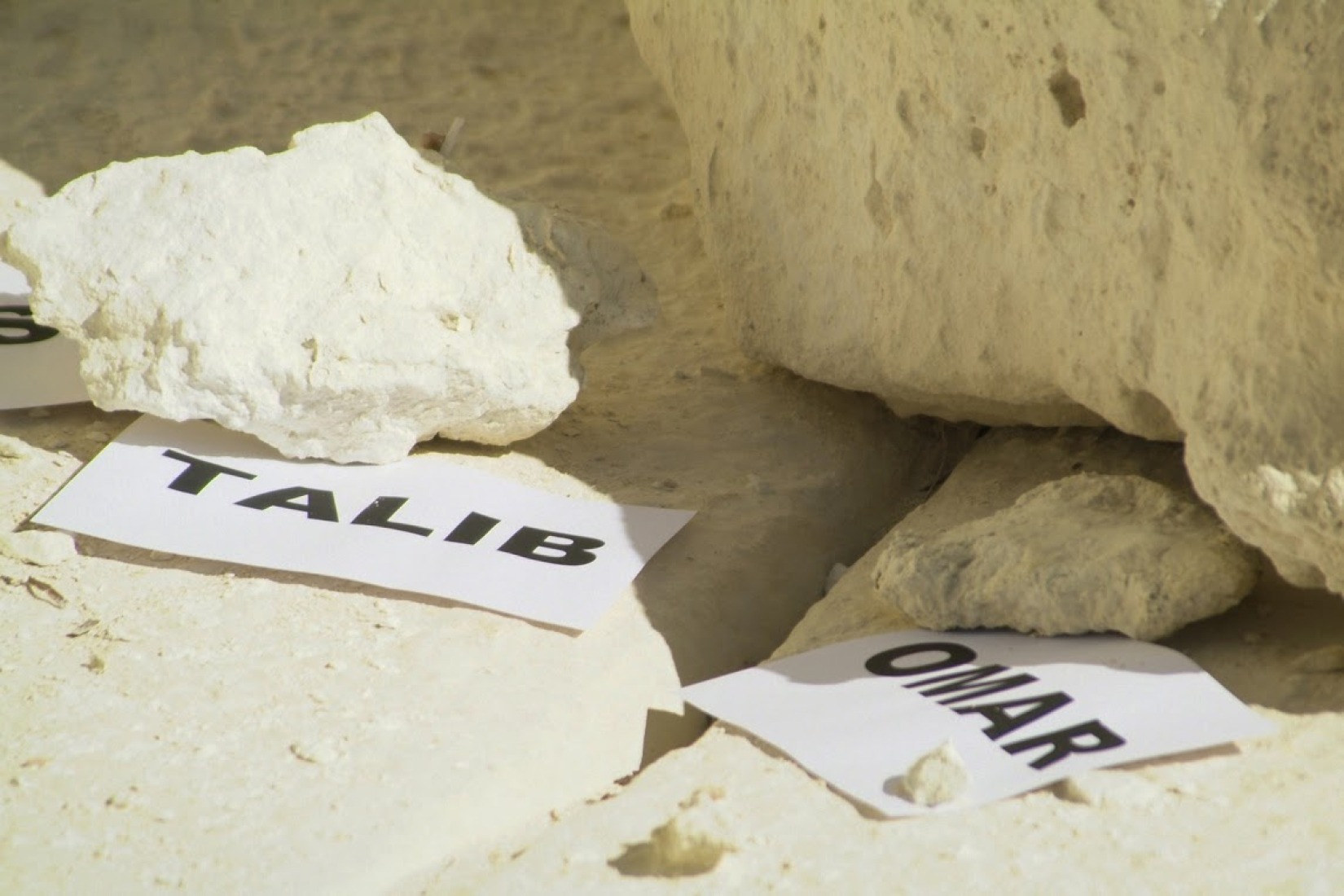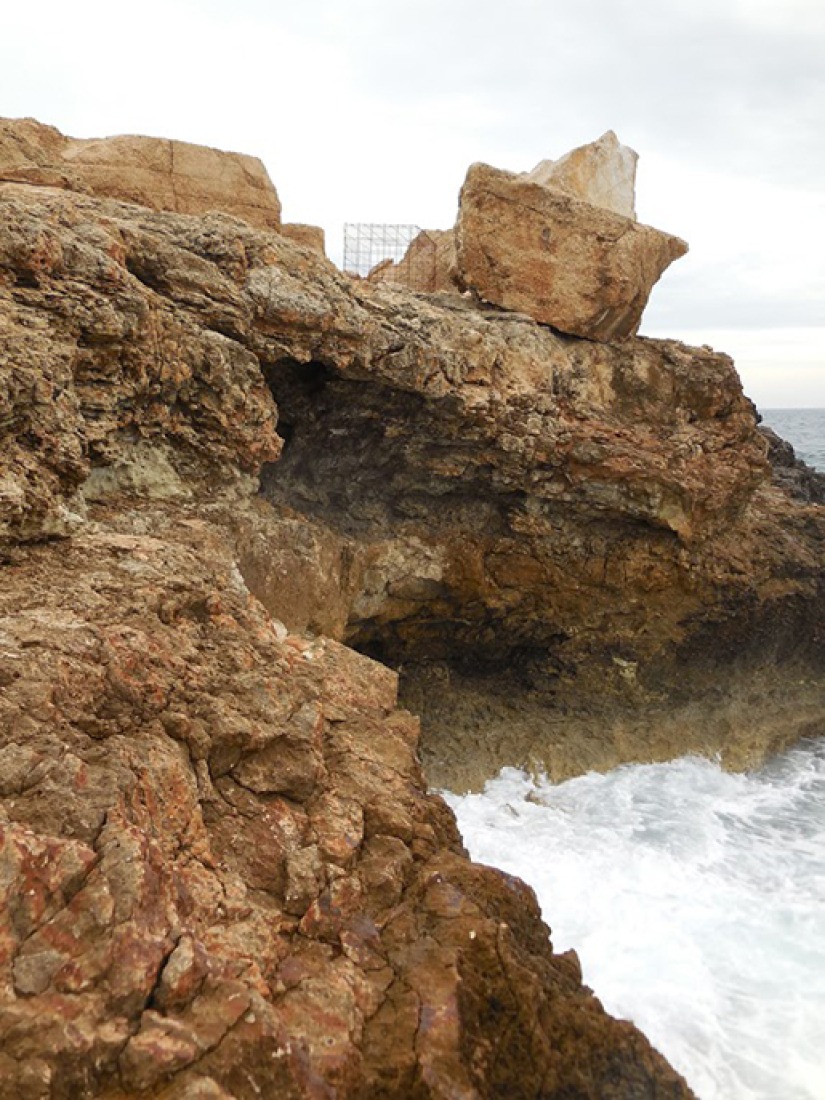These two artists' works openly refer to the central themes of migration and the historical memory of the island, that during Mussolini’s regime was used as a “prison” for political internees.
Many anarchists have been exiled there, including Errico Malatesta, who then managed to escape to the Tunisian coast.
Laura Cazzaniga's work: “Sciatu Perso. Omaggio a Malatesta, ai confinati, agli evasi”. [“Sciatu Persu. Homage to Malatesta, to the internees, to the escapees”] refers to this event. “Sciatu Persu”, which in Sicilian means “Lost Breath”, is also the name of a section of the island’s coastline, where the artist decided to intervene with a site-specific installation, carried out in a cave.
A copious number of threads descends from the stony wall, to recreate some “bars”, much softer and more voluptuous in the effect, as they follow the rocky conformation's variable flow.
At the edge of a peak, just above the cave, Giacomo Nicola Manenti placed his work “Due angeli” [“Two Angels”], consisting of two beached logs lying in an iron cage. Manenti also intervened on a White cliff in front of Rabbit Island, a very evocative place, where he put 200 paper sheets, with the names of as many 200 possible castaways printed on them. The work, entitled “Luogo del sacrificio” [“Sacrifice’s place”], is indeed dedicated to all the shipwrecked migrants.
